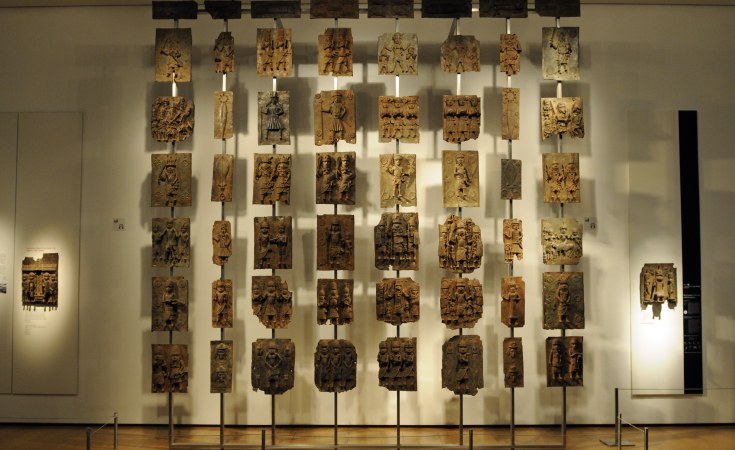Many of the famous Benin Bronzes pillaged by British colonial officers in 1897 are made of brass manillas from the German Rhineland, new research shows.
For years, researchers have puzzled over the origins of metals used for the famous brass sculptures and plaques pillaged during Britain's 1897 colonial capture of the Kingdom of Benin (present-day Nigeria).
The vast majority of the Benin Bronzes were pillaged during that initial raid, before the UK took over the brass trade in West Africa.
There are over 3,000 Benin Bronzes in total, but most are displayed in European and North American institutions -- like the Ethnological Museum of Berlin and the British Museum in London. Only a few are currently held in museums in Nigeria.
Benin bronze metal source a mystery
Researchers have long suspected that the brass used to create the impressive sculptures was transported to Benin via Portuguese trade routes in the 15th century, but they haven't been able to pinpoint where the metals originated in Europe.
A study published Wednesday by researchers at the Technische Hochschule Georg Agricola in the German city of Bochum offers evidence that much of the material used to create Benin's 16th and 17th century bronzes came from Germany's Rhineland region.
"The Benin Bronzes are the most famous ancient works of art in all West Africa," study author Tobias Skowronek said in a statement. "Finally, we can prove the totally unexpected: the brass used for the Benin masterpieces, long thought to come from Britain or Flanders, was mined in western Germany. This is the first time a scientific link has been made."
Manillas a possible source
Historians have long suspected the Benin Bronzes were crafted out of manillas, distinctive horseshoe-shaped items shipped to Africa by the Portuguese in the late 15th century.
Manillas were made from bronze, copper or brass and used as currency. They were originally made in sevearal Europen countries at different times in history then shipped to Africa via European traders.
Researchers thought that by tracing the history of manillas, they could find the source of the brass used in the Benin Bronzes.
Work by Rolf Denk, author of The West African Manilla Currency, identified three main types of manillas used in West Africa between 1439 and 2019.
Early manillas traded by the Portuguese known as "tacoais" dated back to 1450. They were traded in the Kingdom of Benin and Elmina (present-day Ghana), and were made from metal originating in Germany.
A second type were the "Birmingham" manillas, which were used from 1625 to 1949 in present-day southeast Nigeria. They were made from metals in the UK.
A third type used from 1600 to 1914 -- "popo" manillas -- were distinct from both the Birmingham and the tacoais and traded in Ivory Coast. They were made in the UK, Netherlands, Portugal, and France.
Manilla classification system cracks code
The new study from Germany has pieced the puzzle together using Denk's classification system combined with chemical analysis of manillas and Benin Bronzes.
The researchers analysed around 70 manillas physically identifiable as "tacoais" from shipwrecks in African, American and European waters between the 16th and 19th centuries.
The composition of the tacoais manillas, they found, was very similar to the composition of Benin Bronzes. They both contained ores from Germany's Rhineland.
The authors concluded that artisans in Benin likely melted down the manillas originating in Germany to make the Benin Bronzes.
"This study definitively identifies the Rhineland as the principal source of manillas at the opening of the Portuguese trade," the authors wrote in the study. "Millions of these artifacts were sent to West Africa where they likely provided the major, virtually the only, source of brass for West African casters between the 15th and the 18th centuries, including serving as the principal metal source of the Benin Bronzes."
The authors added that their research provides new insights into early Atlantic trade and African use of European goods.
Edited by: Fred Schwaller


